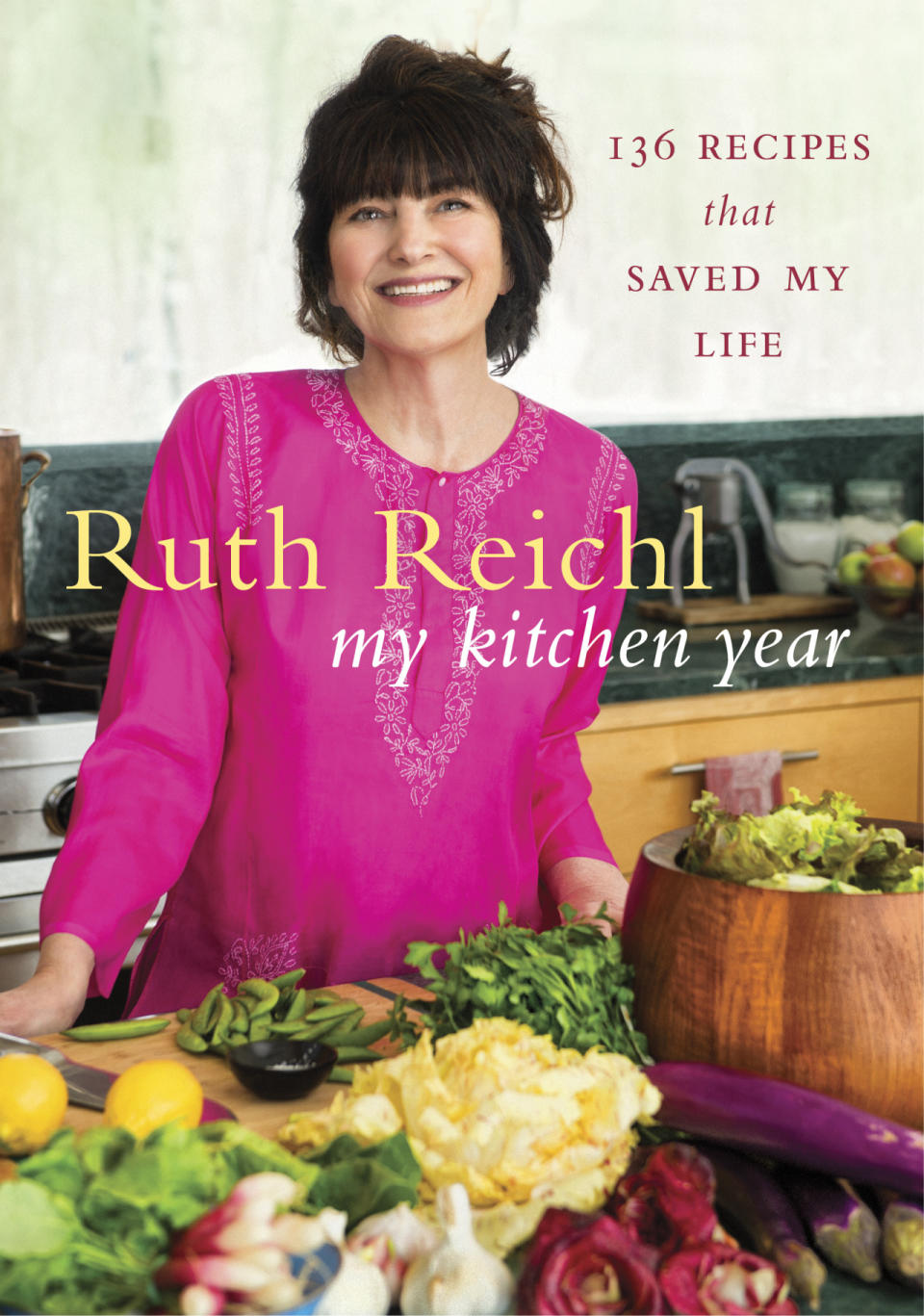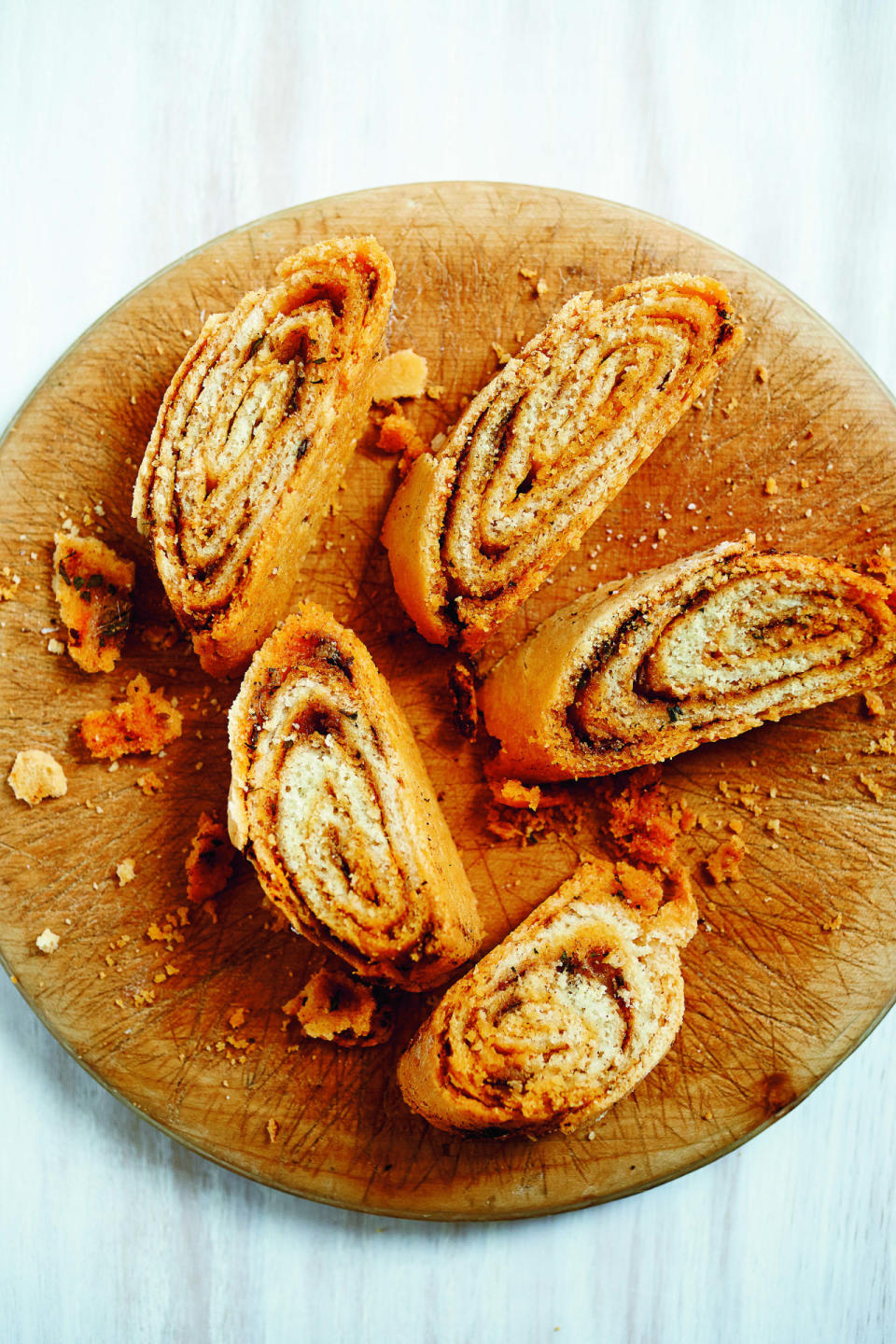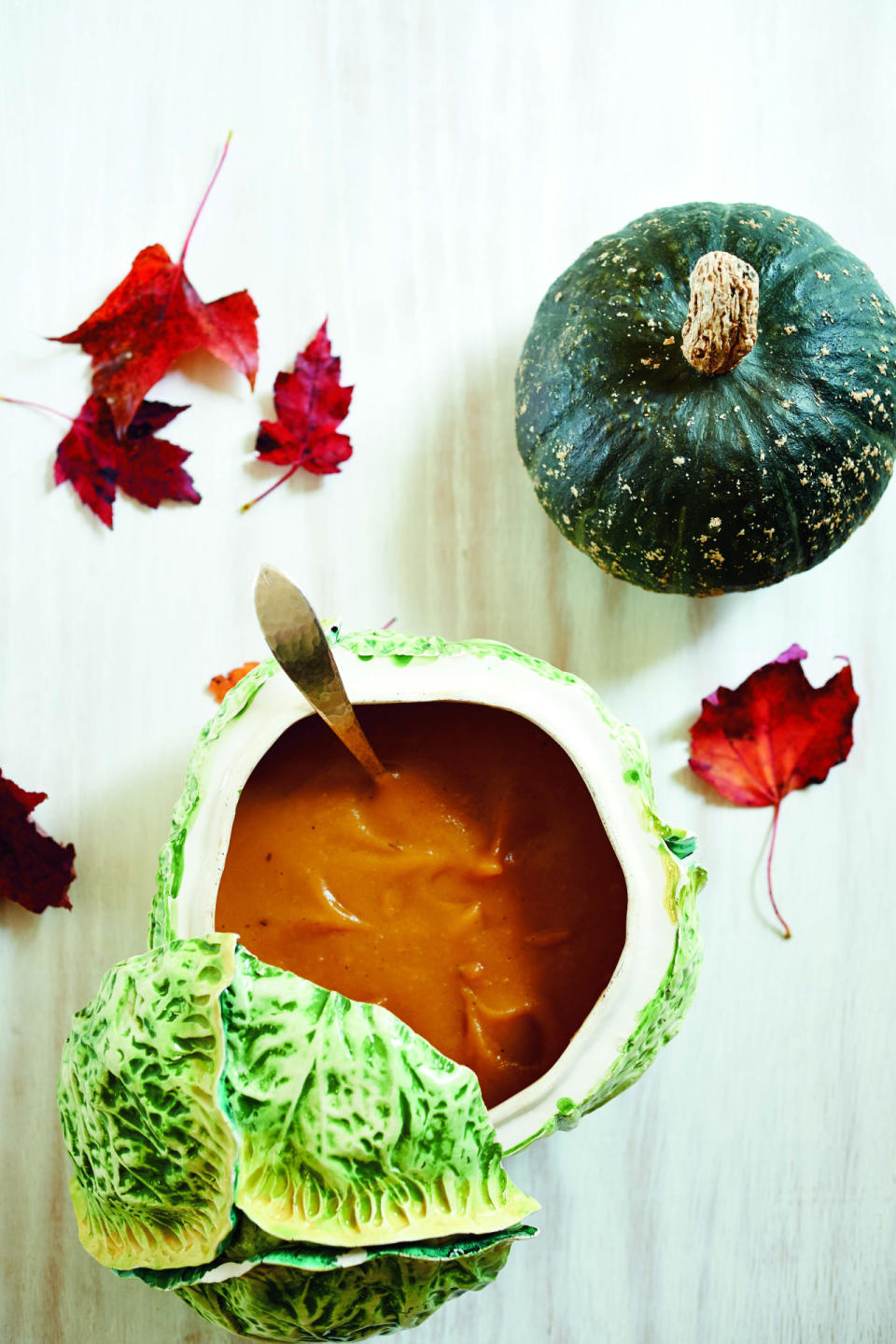How Ruth Reichl Finds Comfort in the Kitchen
Yahoo Food’s Cookbook of the Week is My Kitchen Year: 136 Recipes That Saved My Life by Ruth Reichl, former editor in chief of Gourmet and bestselling author of the memoirs Comfort Me with Apples, Garlic and Sapphires, and Tender at the Bone.

My Kitchen Year by Ruth Reichl. (Photo: Evan Sung)
“How quickly things can go from bitter to sweet,” writes Ruth Reichl in My Kitchen Year. She’s referring to a recipe for broccoli rabe bruschetta, observing how cooking turns broccoli rabe from acerbic to amiable. But it doesn’t take much of a leap to realize there’s a lot more going on here.
My Kitchen Year is Reichl’s first cookbook in 43 years and the book Gourmet fans have been longing for since the beloved magazine’s abrupt closing in 2009. Yes, it’s a seasonally driven cookbook in which Reichl shares her recipes for pork and tomatillo stew, New York corn muffins, Asian eggplant salad, and real fried chicken, but it’s also an incredibly personal account of what the end of Gourmet meant for Reichl and how she found comfort in cooking.
Rather then tell you about the book, we’ll let the ever-eloquent Reichl speak for herself.
Yahoo Food: You shot My Kitchen Year in your own home kitchen without a stylist or extra lighting. What made you want to do it that way and what was the process like?
Ruth Reichl: To be honest, it wasn’t my idea. When I approached Mikkel Vang about photographing the book, he said, “The writing is so open and honest, and the photographs should be, too. Let’s do something really radical, and just shoot what we see.”
The process, I should say, was a bit mad. Mikkel never has much time, so we shot each season in a marathon two-day shoot. One day we did 14 dishes! But basically I spent a couple of days shopping for food, and then on the shoot days we just shot the food as we felt like eating it. Sometimes Mikkel stood on the counter above me as I cooked.
When it was done, we’d go to the cupboard, and figure out what plate to use. Most of the time we put the food on the floor by a window, and then I would get a big book off the shelf, and hold it for him to get the light the way he wanted. In between shots we’d go out into the woods and romp around.

Anchovy Bread (Photograph: Mikkel Vang)
You’re active on Twitter and included tweets in your book. Could you explain what Twitter and the Twitter community has meant for you and what you like about it?
For the longest time I just thought of Twitter as an easy way to keep up with friends. It never occurred to me that strangers were listening in. But when Gourmet closed, the outpouring of support was so fantastic — and so comforting — I realized I had a community of virtual friends.
One of the things I loved best about Gourmet was the eight test kitchens, where we were always exchanging ideas. In the past, in my own kitchen, I’ve always felt alone. But Twitter, to me, is just like the test kitchen. I can ask questions and send ideas out into the Twittersphere, and get instant responses. It’s really lovely.
Could you talk about how cooking helped you heal after Gourmet folded?
I LOVE the physical act of cooking. To me it is a kind of meditation, and in the really dark days, when depression threatened to overwhelm me, I’d just go into the kitchen and start cooking. It ALWAYS helped.
What are the best types of dishes to cook your way through a rough time?
Different foods mean different things to different people. But in a pinch, cook what’s comforting to you. For me, the scent of chicken turning itself into soup is incredibly soothing. So is bread rising in the oven; all those wild yeasts! And chicken stock turned into avgolemono — Greek lemon rice soup — is like a bowl of sunshine.
More specifically, if someone is having a really bad day, what should they cook?
That depends what they like, but on the worst days of my life I invite friends over and bake a giant chocolate cake. It’s hard to feel too terrible when the scent of chocolate is wafting into every corner in the house. Then, too, sharing food with people you care about is a wonderful way to make yourself feel better.

Butternut Squash Soup (Photograph: Mikkel Vang)
You write about wanting to lose yourself in a recipe and making dishes that demand your full attention. What is it about this type of cooking that’s so calming and comforting for you?
There are some things you can do with only half your mind; cooking isn’t one of them. When you cook you’re using sharp knives and fire; you need to be totally present. But more than that, what happens in the kitchen engages all your senses if you take the time to pay attention to the scent of onions caramelizing in butter, the hiss and burble of a stew, the color that’s revealed only when you peel a peach. No matter what else is happening in my life, when I give myself to a recipe it not only offers me something delicious to eat, but a whole new outlook.
As you relate in the book, when you broke your foot, you weren’t able to cook. What did that experience teach you about cooking?
I missed cooking so much when I was laid up that it made me realize how much I rely on spending time with butchers, bakers, farmers, and cheese makers. I love those little exchanges at the farmers’ market and across the counter in the store. It also reminded me that cooking grounds me in time and space, bringing the seasons inside the house. I couldn’t wait to get out of bed and back into the kitchen.
During this time, your husband and son cooked for you. Did you find it comforting to have other people cook for you?
I think that cooking for people is a gift. I enjoy both the giving and the receiving. And while we’re on the subject, one of my hopes for this book is that it will make people want to cook for others, encourage them to invite people into their homes. I hate the modern trend where you meet your friends in restaurants instead of inviting them over to eat. It’s such a wimpy way to play it safe. Inviting people into your home is an act of bravery and generosity; you’re showing people who you really are, and offering them true friendship.
My hope is that people will read the book and be inspired to go into the kitchen, mess around, have fun — that they will give themselves permission to make mistakes. To me the goal of cooking is not achieving perfection; it’s about taking chances, having an adventure. And if it doesn’t work out? There’s always the next meal.
What else did you learn during your kitchen year?
I learned that the secret to life is finding joy in ordinary things.
Visit Yahoo Food throughout the week for recipes from My Kitchen Year.
Check out other cookbooks from Yahoo Food’s Cookbook of the Week:
Good and Cheap by Leanne Brown
A Modern Way to Eat by Anna Jones

